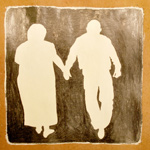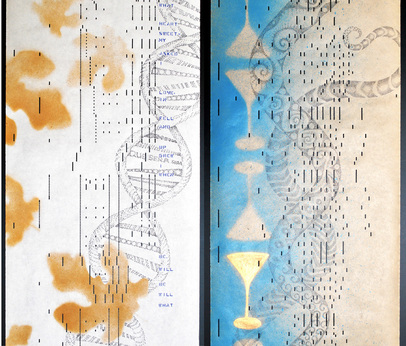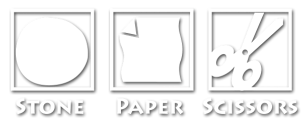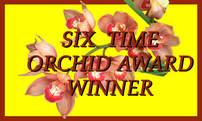
Lynn Susholtz in the Rotunda Gallery, Athenaeum
June 20 to July 25
Opening Reception ~ Friday, June 19th 6:30-8:30pm
Athenaeum Music & Arts Library
1008 Wall St. La Jolla, CA 92037
Drawings in graphite and colored pencil on velum and rosin paper. Susholtz’ art practice ranges in scale from small drawings that explore the cultural context and social histories of everyday objects to large-scale interactive environments.
June 20 to July 25
Opening Reception ~ Friday, June 19th 6:30-8:30pm
Athenaeum Music & Arts Library
1008 Wall St. La Jolla, CA 92037
Drawings in graphite and colored pencil on velum and rosin paper. Susholtz’ art practice ranges in scale from small drawings that explore the cultural context and social histories of everyday objects to large-scale interactive environments.

All The News You Need
Drawings in graphite and colored pencil on velum and rosin paper are misplaced and replaced images from newspaper photographs. A first glance read of the New York Times enables my daily ritual of creating my own misinterpretations and misinformation from headlines and images.
Cultural Artifact Series
I am interested in “retro-techification”, the intersection of ancient technologies and the repurposing of information, helping to render information and the technology useless and simultaneously more meaningful. A series of obsessive drawings on player piano roll paper becomes a meeting place for Legoman and a Cycladic figure, and a modern day scroll inscribed with life lessons in song; “When You and I Were Seventeen” and “Que Sera, Sera”. The drawings are stippled ink, a pseudo-scientific reference to anatomical and archeological illustration with images of both ancient and pop-cultural artifacts. You can also play your story on the retro-fit piano keyboard.
Player Piano Paper and Punch Technology History
Form and Emptiness
1725: Jacquard loom punch patterns
1833: Babbage number cards proposed for the analytical engine
1842: Player piano rolls, French patent by Claude Seytre
1890: Hollerith punch cards for the census and Tabulating Machine Company (later renamed IBM)
2000: Hanging Chad
Susholtz’ art practice ranges in scale from small drawings that explore the cultural context and social histories of everyday objects to large-scale interactive environments. Susholtz employs a strong social engagement component that blends the virtual and physical community.
Lynn and Art Produce are featured in the fall 2012 issue of Public Art Review, “Food For Thought”. She co-authored a resource book for teachers, “Object Lessons- Teaching Math Through the Visual Arts” and the article, “Community Development in the Context of Art: North Park and the Citizen Artist” in CultureWork online magazine.
Drawings in graphite and colored pencil on velum and rosin paper are misplaced and replaced images from newspaper photographs. A first glance read of the New York Times enables my daily ritual of creating my own misinterpretations and misinformation from headlines and images.
Cultural Artifact Series
I am interested in “retro-techification”, the intersection of ancient technologies and the repurposing of information, helping to render information and the technology useless and simultaneously more meaningful. A series of obsessive drawings on player piano roll paper becomes a meeting place for Legoman and a Cycladic figure, and a modern day scroll inscribed with life lessons in song; “When You and I Were Seventeen” and “Que Sera, Sera”. The drawings are stippled ink, a pseudo-scientific reference to anatomical and archeological illustration with images of both ancient and pop-cultural artifacts. You can also play your story on the retro-fit piano keyboard.
Player Piano Paper and Punch Technology History
Form and Emptiness
1725: Jacquard loom punch patterns
1833: Babbage number cards proposed for the analytical engine
1842: Player piano rolls, French patent by Claude Seytre
1890: Hollerith punch cards for the census and Tabulating Machine Company (later renamed IBM)
2000: Hanging Chad
Susholtz’ art practice ranges in scale from small drawings that explore the cultural context and social histories of everyday objects to large-scale interactive environments. Susholtz employs a strong social engagement component that blends the virtual and physical community.
Lynn and Art Produce are featured in the fall 2012 issue of Public Art Review, “Food For Thought”. She co-authored a resource book for teachers, “Object Lessons- Teaching Math Through the Visual Arts” and the article, “Community Development in the Context of Art: North Park and the Citizen Artist” in CultureWork online magazine.

 RSS Feed
RSS Feed
